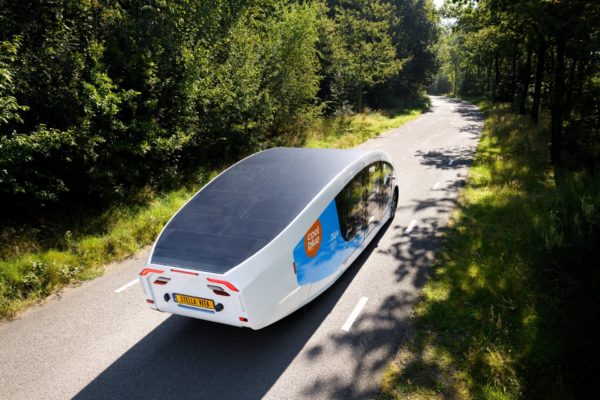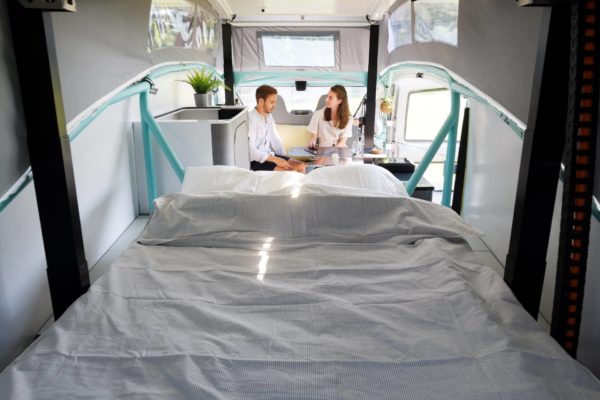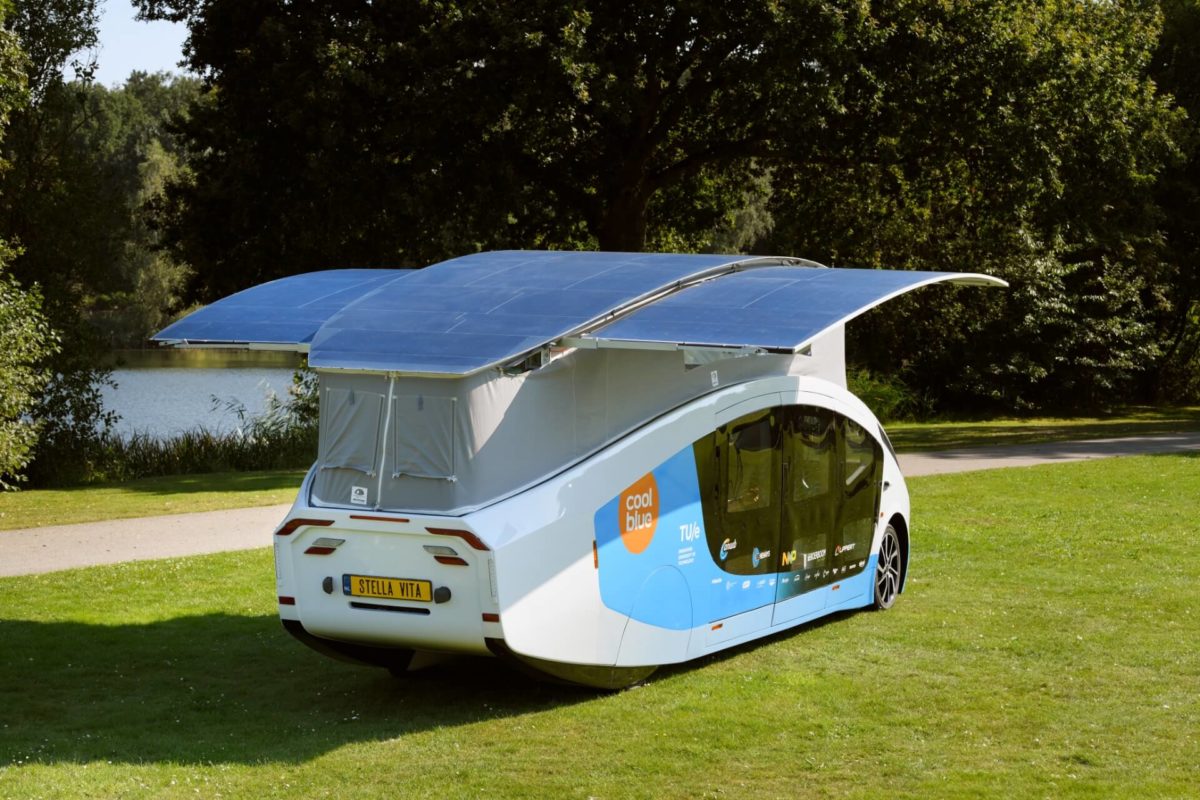Solar Team Eindhoven, a multidisciplinary student team from the Eindhoven University of Technology, has developed a prototype of a PV-powered mobile home that is claimed to be fully independent from grid electricity for both living and driving. “The vehicle generates enough solar energy to drive, shower, watch TV, charge your laptop and make coffee,” the student team claims.
Called Stella Vita, the vehicle will now be tested in a journey from Eindhoven to Tarifa in southern Spain and, according to one of the team members, researcher Kevin Smolenaars, it has a range of 600km at night and of 730km on a sunny day, at a moderate speed of up to 85kph.
“The vehicle is designed in a way that the roof slides up when stationary and more solar panels fold out, doubling the PV system surface to 17.5 square meters,” he told pv magazine. “When folded, the vehicle size is 7.20×2.05×1.83m, and when it is unfolded, it reaches 7.20×4.40×2.54m.”

Image: Bart van Overbeeke, Solar Team Eindhoven
The mobile house has a weight of only 1,700kg and consists of a steel roll-cage and an aeroshell made of glass fiber with an aluminum/foam core. The PV system has a capacity of 4.5 kW and is made with 36 solar modules. The array occupies a surface of 8.8m2 when the solar panels are folded and 17.5m2 when unfolded.
The PV system is divided into eight units, with four units being deployed on the normal roof and four being placed on the additional surface when the array is completely unfolded. All the modules are equipped with maximum power point trackers (MPPTs). “As our vehicle does not drive on the 230 V you see in normal homes, but on 400 V, [standard] MPPTs were not available for our application,” Smolenaars stated. “This meant that we needed to innovate in this area as well, and develop these ourselves.”
The monocrystalline solar cell technology was provided by Dutch manufacturer Mito Solar. “The panels have an efficiency of 23.7%,” Smolenaars specified. According to him, unlike solar panels for rooftop applications, these panels are very lightweight, with a mass of only 1.5kg/m2 “But we can't provide too many details at the moment,” he added.
Popular content
The modules, which are slightly flexible to adjust to the curved roof shape, were deployed on the vehicle during its construction. “Our PV system charges roughly a quarter of our range on a sunny day and, when stationary, we can charge a bit more than 200km a day, when folded out,” Smolenaars further explained. “This means we can fully charge our battery in about three days, which is perfect for our vehicle and application.” The total capacity of the lithium-ion batteries used is 60 kWh.

Image: Bart van Overbeeke, Solar Team Eindhoven
The vehicle can host two people and its interior consists of a bed and a kitchen, including a modular cooker you can use outside. Furthermore, there are Philips Hue lights and a smart home system, to create a domestic setting. There also is a toilet and a circular shower which reuses water when taking a shower. “Lastly, we also developed an infotainment system, which gives insight into your energy consumption,” Smolenaars emphasized. “With the infotainment system, you can make decisions about what to do with your energy, like watching a Netflix series on your tablet or driving that extra 10km the next day.”
The research group student team is not targeting the commercialization of the vehicle in future. “We aim at making developers aware of all the innovations we achieved in this project,” Smolenaars stated.
This project was made possible by the partners of Solar Team Eindhoven, which was this year enriched by Coolblue, a Dutch e-commerce company that recently launched Coolblue Energy and provided energy-efficient devices for the interior. “Their mission aligns perfectly with the mission of Solar Team Eindhoven,” Smolenaars concluded. “Furthermore, the Eindhoven University of Technology was a large contributor and helped the team with a lot of knowledge and support on every level.”
This content is protected by copyright and may not be reused. If you want to cooperate with us and would like to reuse some of our content, please contact: editors@pv-magazine.com.



3 comments
By submitting this form you agree to pv magazine using your data for the purposes of publishing your comment.
Your personal data will only be disclosed or otherwise transmitted to third parties for the purposes of spam filtering or if this is necessary for technical maintenance of the website. Any other transfer to third parties will not take place unless this is justified on the basis of applicable data protection regulations or if pv magazine is legally obliged to do so.
You may revoke this consent at any time with effect for the future, in which case your personal data will be deleted immediately. Otherwise, your data will be deleted if pv magazine has processed your request or the purpose of data storage is fulfilled.
Further information on data privacy can be found in our Data Protection Policy.